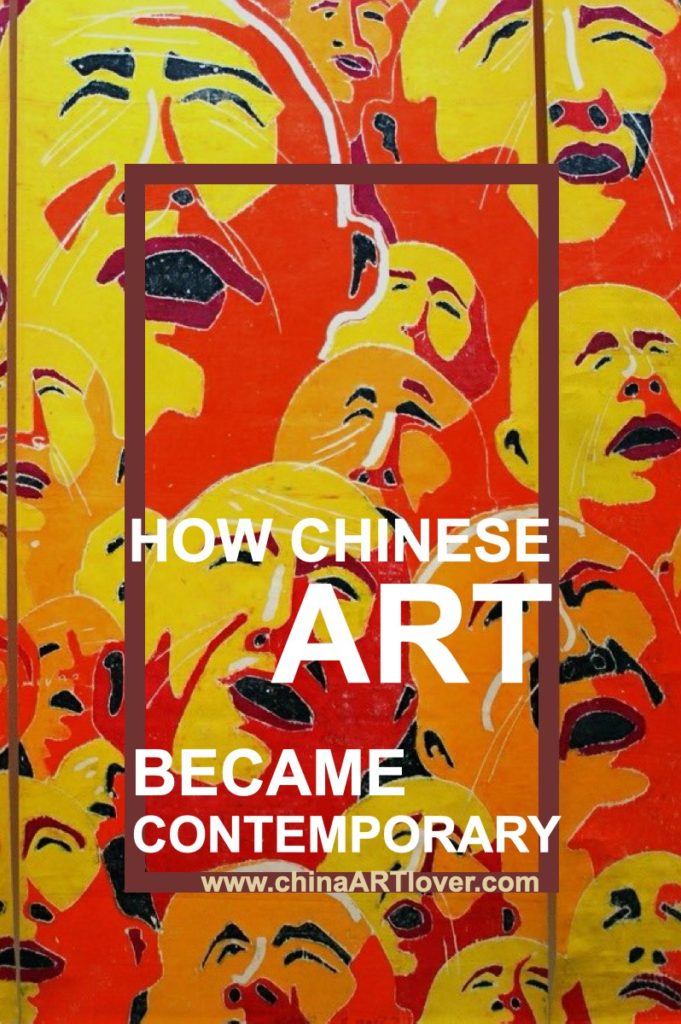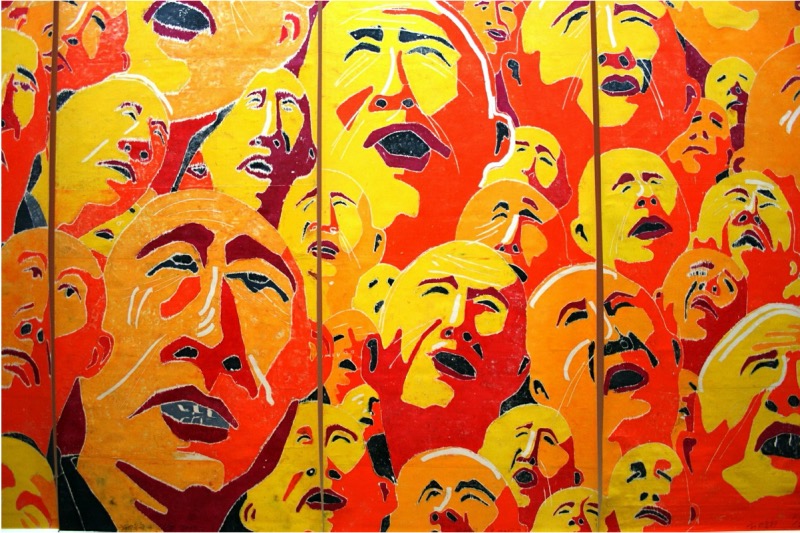How Chinese Art Became Contemporary: In the year 1989, China witnessed a moment which would be later marked as the bravest demonstration of defiance against a controlling government – a young man standing resolutely in front of an army of marching tanks. While most consider the incident at Tiananmen Square to be the zenith of China’s dissent against the Chinese Communist Party, few have acknowledged the incidents which had preceded this demonstration. Months before the protest, an artist named Xiao Lu shot two bullets into a sculpture she was exhibiting, called the Dialogue.
While many have questioned Lu’s actions in the 1989 Avant-Garde Exhibition, she was soon heroized as the first rebel against the Chinese government. Western media quickly took her incident up as the starting act of rebellion and the inspiration behind the Tiananmen Square demonstrations. While this was inspiring, to say the least, it was also the iceberg that would cause Chinese artists to go underground in fear of democide. However, there was one good thing that came out of this – the beginning of Chinese contemporary art.
The Underground Artists
For the Chinese governments, artists were easy propagators of dissent and so most artists were forced to give up their work. They were called ‘spiritual polluters’ and other degrading nicknames, while government officials breathed down their necks to ensure they wouldn’t talk to Western reporters.
All of this, naturally, made Chinese artists fear for their lives. Since they no longer had money due to the government’s restrictions and were unable to exhibit their works freely, many began forming underground groups. A lot of artists also managed to escape into the Western world and began integrating their Western influences within their traditional art techniques they were taught at home.
If you are interested in more about Chinese Contemporary Art check our artbook page.
This underground group of artists would also hold secret exhibitions at their small apartments when they could. With their frustrations at the government, these exhibitions normally held paintings that represented their statements against the controlling regime of the CCP along with ideas about social change.
公寓 (Gong Yu) was one of the most popular places of rendezvous for these oppressed artists, and as their exhibitions mostly took in their rented apartments, the work they produced was later dubbed as ‘apartment art’. The apartment art was heavily connoted with ideas of cynical realism (see for example Yue Minjun), which went against Mao’s Socialist Realism. The popular medium of art used during this period was oil painting, something quite different from traditional methods of Chinese art.
The Rise of Modern Art in China
Meanwhile, Chinese artists who had fled to Western worlds were allowed greater liberty at displaying their paintings in international exhibitions. These artists spread around both Europe and America and the Western audience became more interested in the Chinese artwork. This interest sparked up when in 1995 at an exhibition in Vienna which was populated with paintings by Chinese artists, Princess Diana visited and admired the display of art, causing international media to take notice as well.
As the group of immigrant artists mixed in with their Western homes, they began exploring and understanding different qualities of both the Chinese and Western cultures. The artist Xu Bing once wrote that integrating with this new environment had allowed him to cherish his own tradition but also learn from the traditions of the west. In his words, he believes ‘only if we are able to combine these (Chinese) traditions with the western culture, can we create art of the future.’
Characteristics of Modern Chinese Art
Despite both the groups of underground and international artists having worked during the same time and contributing equally to the rise of modern Chinese art, they are still discussed separately in Chinese modern art history. This is mainly because the works curated on Cynical Realism is based more on representing Chinese culture and tradition in a post-Mao setting while Xu Bing and other international Chinese artists heavily integrated Western elements in their paintings.
The art chinois (Chinese modern art), incorporates a number of mediums which separates it from traditional Chinese art. Unlike the ink-and-paper medium, artists can choose to express themselves in either paintings, sculptures, film, video, photography, installation, and performing arts.
Perhaps the most recognisable feature of contemporary Chinese art is the way it is centred around the social and political ideologies of the Chinese Communist Party. Traditional art has been largely expressive and contains nuances about nature, landscape and simple emotions while contemporary Chinese art revolves around strong opinions and jarring contrasts. Take for example, the calligraphic work of Qiu Zhijie in his ‘Writing the Orchid Pavilion Preface One Thousand Times’. Here Zhijie does literally what he says and this endless calligraphy soon turns out in to a paper doused with black ink. Zhijie takes Chinese meticulousness and transforms into a complete canvas of nothingness. This he terms the ‘Total Art’.
Present Day Chinese Contemporary Art
Traditional art has largely turned into a historical artifact nowadays, but there are still practitioners who’ve ensured its existence through modern times. The more popular type of art for Chinese painters currently is their renditions of contemporary art. Most of these include hyper-realistic images and radicalized pieces about society, culture, and politics.
It cannot be denied that Chinese art has been significantly westernized, but this is expected. As we become more globalized, it is natural for us to combine multi-cultural and multi-national elements into our artistic productions. However, this does not mean that Chinese art has lost its novelty and uniqueness but only signifies how vital art in China has been to the birth of multi-cultural art. To this day, Chinese artists such as Fan Zheng, Zhang Xiaogang, and Liu Wei have contributed immensely to this global art scene, amassing billions in their sales volumes.
Chinese art plays a monumental role in the age of modern art and it is important that it should continue to do so.



2 comments
[…] or Political Pop (to find out more about Cynical Realism and what made Chinese art contemporary, read this article). It stands out as an early “homegrown” art style, formed by artists who either spent a […]
[…] Blog […]
Comments are closed.